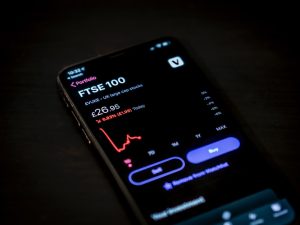Understanding the Fundamental Differences Between Trading Stocks and Forex
When it comes to investing, there are various asset classes available to traders, including stocks and forex. While both offer opportunities for profit, there are fundamental differences between the two that traders need to understand before deciding which market to trade.
1. Market Size and Liquidity:
One of the key differences between trading stocks and forex is the market size. The stock market is limited to the number of shares issued by companies, which can vary greatly depending on the company’s size and popularity. On the other hand, the forex market is the largest financial market in the world, with trillions of dollars traded daily.
This difference in market size has an impact on liquidity. In the stock market, liquidity can vary across different stocks. Some stocks may have high liquidity, meaning there are many buyers and sellers, while others may have low liquidity, making it harder to buy or sell shares without impacting the price. In forex, due to its massive size, traders can enter and exit positions with ease, as there is always a buyer and seller available.
2. Trading Hours:
Another significant difference between stocks and forex is the trading hours. The stock market is generally open during regular business hours, which can vary depending on the country. For example, the New York Stock Exchange is open from 9:30 am to 4:00 pm Eastern Time. Outside of these hours, trading is not possible.
In contrast, the forex market operates 24 hours a day, five days a week. This means that traders can participate in forex trading at any time, regardless of their location. The forex market is divided into three major trading sessions – Asian, European, and American – which overlap, providing ample opportunities for traders to take advantage of market movements.
3. Market Structure:
The structure of the stock market and forex market also differs significantly. The stock market is centralized, with exchanges acting as intermediaries between buyers and sellers. These exchanges ensure that trades are executed fairly and transparently.
On the other hand, the forex market is decentralized, meaning there is no central exchange. Instead, forex trading takes place over-the-counter (OTC), directly between buyers and sellers through electronic communication networks (ECNs) or interbank platforms. This decentralized structure allows for greater flexibility and faster execution speeds in forex trading.
4. Leverage and Margin:
Leverage and margin are important concepts in both stock and forex trading, but they are utilized differently in each market. In stock trading, margin trading is less common and usually subject to stricter regulations. Traders can typically borrow a portion of the cost of the stock they want to trade, usually up to 50% of the stock’s value.
In forex trading, leverage is a widely used tool, allowing traders to control larger positions with a smaller amount of capital. Forex brokers offer high leverage ratios, such as 100:1 or even higher, which means traders can control positions worth 100 times their account balance. While leverage can amplify profits, it also increases the risk of losses, and traders need to be cautious when using leverage in forex trading.
5. Market Influences:
The factors that influence stock prices and forex rates also differ. Stock prices are influenced by company-specific factors such as earnings reports, financial performance, and news related to the company or its industry. Additionally, macroeconomic factors, such as interest rates, GDP growth, and inflation, can impact stock prices.
In forex trading, currency exchange rates are influenced by a wide range of factors, including economic data releases, central bank policies, geopolitical events, and market sentiment. Traders need to stay updated on global news and economic indicators to make informed trading decisions in the forex market.
In conclusion, trading stocks and forex offer unique opportunities and challenges. Understanding the fundamental differences is crucial for traders to choose the market that aligns with their trading style, risk tolerance, and investment goals. Both markets require knowledge, skills, and discipline, and traders should educate themselves and practice with demo accounts before risking real money in either market.





